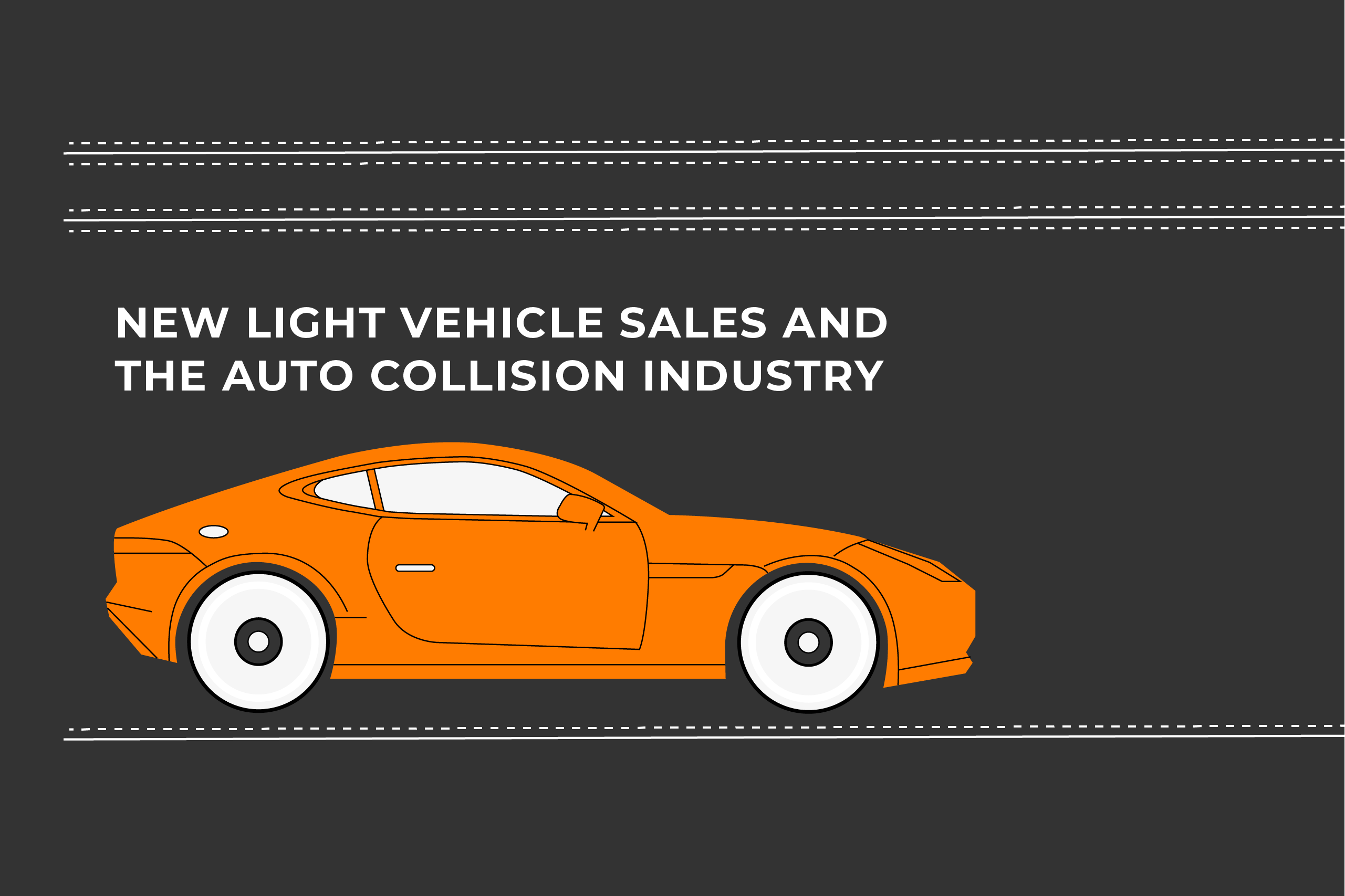New Light Vehicle Sales and the Auto Collision Industry

New car sales has always been one of the longer-term indicators to watch for in the auto collision industry. The impact of slowing sales has a direct impact on the average age of vehicles repaired. This influences used car values, which in turn, changes total loss frequency. When states issued shelter-in-place orders and vehicle production went idle, many feared a shuddering halt of new light vehicle sales, similar to the one experienced during the recession of 2008-2009.
In a healthy economy, US consumers purchase 16.5-17 million new vehicles a year, a sharp contrast to the 2009 sales slump when (even with the Cash for Clunkers program) US consumers purchased just over 10 million autos. In December 2019, the National Auto Dealers Association (NADA) forecasted very healthy sales of 16.8 million vehicles in year 2020, but with the COVID-19 outbreak, things changed quickly. New light vehicle sales dropped by 50% in April, according to the J.D. Power-LMC Automotive forecast. While this is a significant decrease, it is not as severe as the new light vehicle sales downturn experienced in China and Europe.
Why the difference? US auto dealers quickly expanded online sales, which are not as popular in Europe and China as they are in the US. US auto dealers adapted with “touch free” purchase and delivery experiences, expanded loan terms to 84 months with 0 percent interest, and deferred payment options that helped to moderate the sales drop.
The types of new vehicles being purchased during these challenging times is also important. The most popular vehicle type to date are full size trucks. Long loan terms and low-priced fuel add incentive to the purchase of a truck.
What will that mean to the collision industry down the road? Expect to see a subtle increase in the age of the average vehicle on the road, now at 11.8 years from new, to potentially 12 years old. The increased fleet age leads to an anticipated increase in the percentage of total loss vehicles. Additionally, with auto dealers seeking to “move metal,” lower new vehicle transactional prices will drive lower used car values, further increasing the frequency of a vehicle becoming an economic total loss.
These factors provide an increased focus on repairable estimates and in particular, the cost of the replacement parts for those vehicles. Most of the cost on a collision repair estimate is replacement parts. Finding the most cost-effective, quality part becomes even more important. PartsTrader helps insurers and collision repairs find and procure the most cost-effective part for every part of the repair estimate and for all part types.
